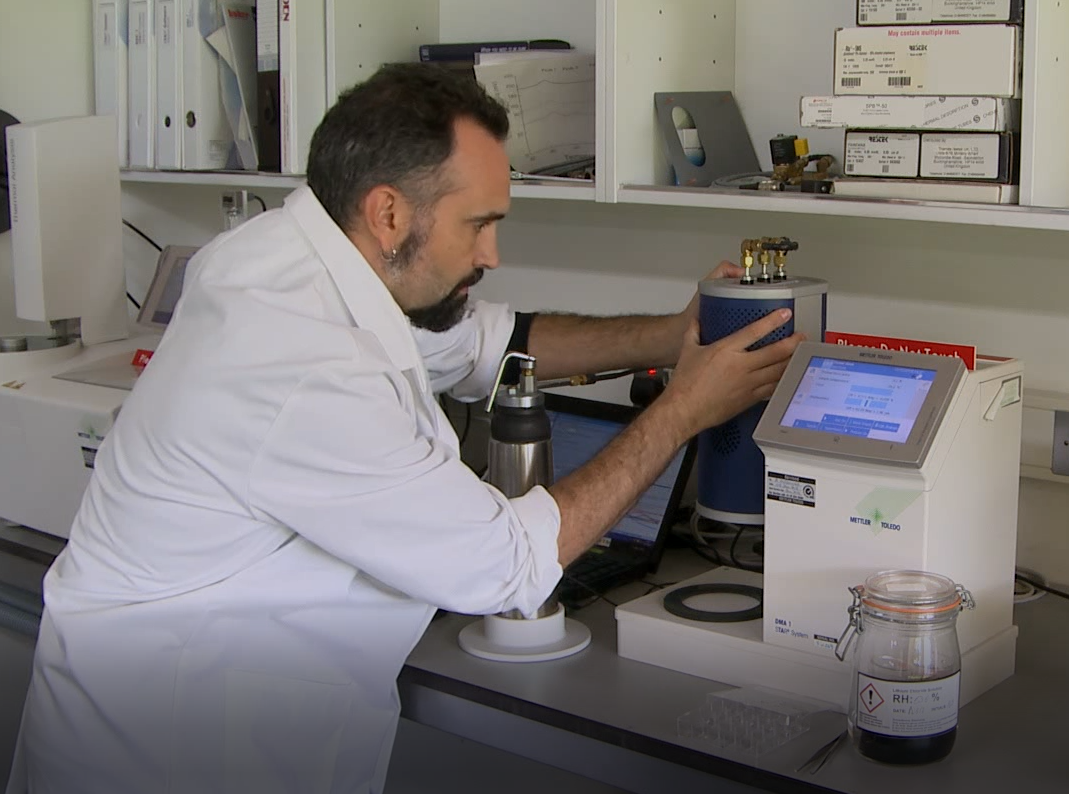The Millennium Seed Bank at Kew's Wakehurst Place contains 41,000 different species of wild plants in collaboration with partners around the world. It's the most biodiverse store on the planet, holding seeds of plants of known use, for example to a specific local community, as well as seeds of endangered plants and some whose value is yet to be discovered.
To store the seeds, the group dry them to low humidity and then freeze them. “We want to fully understand the effect of the drying process." Explains Professor Hugh Pritchard, head of Kew's Comparative Seed Biology Group; “We know that the drier the seeds, the longer they survive, but not all species survive for the same length of time, and we can't tell by looking at them if the seed is still alive. Because of this, every ten years we need to do a germination test to assess the viability."
There is a known species-dependant aspect to whether a seed survives for a long time: legume seeds are usually longer-lived, whereas sunflower seeds and grass seeds tend to be shorter-lived. The difference in lifespan can be up to two orders of magnitude. “When we start dry, cold storage, we don't know if a seed will survive 5 years or 500!"
Hugh's work, with Dr Daniel Ballesteros, is investigating whether the internal structure of the seed could determine a physical aspect of the seed lifespan, including under very cold conditions. After hearing IRIS beamline scientist, Dr Victoria Garcia Sakai, speak at the annual meeting of the Society for Cryobiology (CRYO2019), the potential for neutron experiments to help them caught their attention.
To start the collaboration, they came to IRIS is to measure the internal structure of single cell fern spores from species with different lifespans to do a comparative study. At a certain transition temperature, the sugars and proteins inside the seeds undergo a transition into a glassy structure and it is this glassy state that can be investigated on IRIS.
.jpg)
Hugh
Pritchard on the IRIS beamline during the experiments at ISIS.
Daniel and Hugh hope that, by considering the different glassy structures formed in single cells that are inherently short-lived, they can use this knowledge to gain information on what might be influencing differences in seed lifespan. If they could judge the strength of the glassy structure inside the seed, then this might lead to a model that can predict the seed's longevity in cold storage.
The lipid content of the cells can also have an impact on survival at different temperatures and this relates broadly with composition. Just as chocolate melts in your mouth, but not in your hand, the composition affects solidification and melting behaviour. It is thought that, if the lipids inside a seed crystallise while the seed is in storage, it's bad news! To investigate the effect of lipid content, Daniel and Hugh will leave frozen spores with Victoria that she will measure in the future to test for degradation.
Their initial results indicate that differences in life span between fern spores may be explained by differences in short range interactions of the glass forming molecules. If this investigation proves successful, Daniel explains; “this type of measurement has huge potential."

Daniel
Ballesteros running experiments on calorimetry and mechanical analysis at Kew
that will complement the work done on IRIS.
Further Information
More science highlights from IRIS.
Related publications from the visiting research group on molecular mobility in the glassy state, lipid crystallization and longevity include:
Ballesteros, D., Hill, L. M., Lynch, R. T., Pritchard, H. W., & Walters, C. (2019). Longevity of preserved germplasm: the temperature dependency of aging reactions in glassy matrices of dried fern spores. Plant and Cell Physiology, 60(2), 376-392.
Mira, S., Nadarajan, J., Liu, U., González-Benito, M. E., & Pritchard, H. W. (2019). Lipid Thermal Fingerprints of Long-term Stored Seeds of Brassicaceae. Plants, 8(10), 414.
Ballesteros, D., & Walters, C. (2019). Solid-state biology and seed longevity: a mechanical analysis of glasses in pea and soybean embryonic axes. Frontiers in plant science, 10, 920.
Ballesteros, D., & Walters, C. (2011). Detailed characterization of mechanical properties and molecular mobility within dry seed glasses: relevance to the physiology of dry biological systems. The Plant Journal, 68(4), 607-619.
Walters, C., Ballesteros, D., & Vertucci, V. A. (2010). Structural mechanics of seed deterioration: standing the test of time. Plant Science, 179(6), 565-573.
